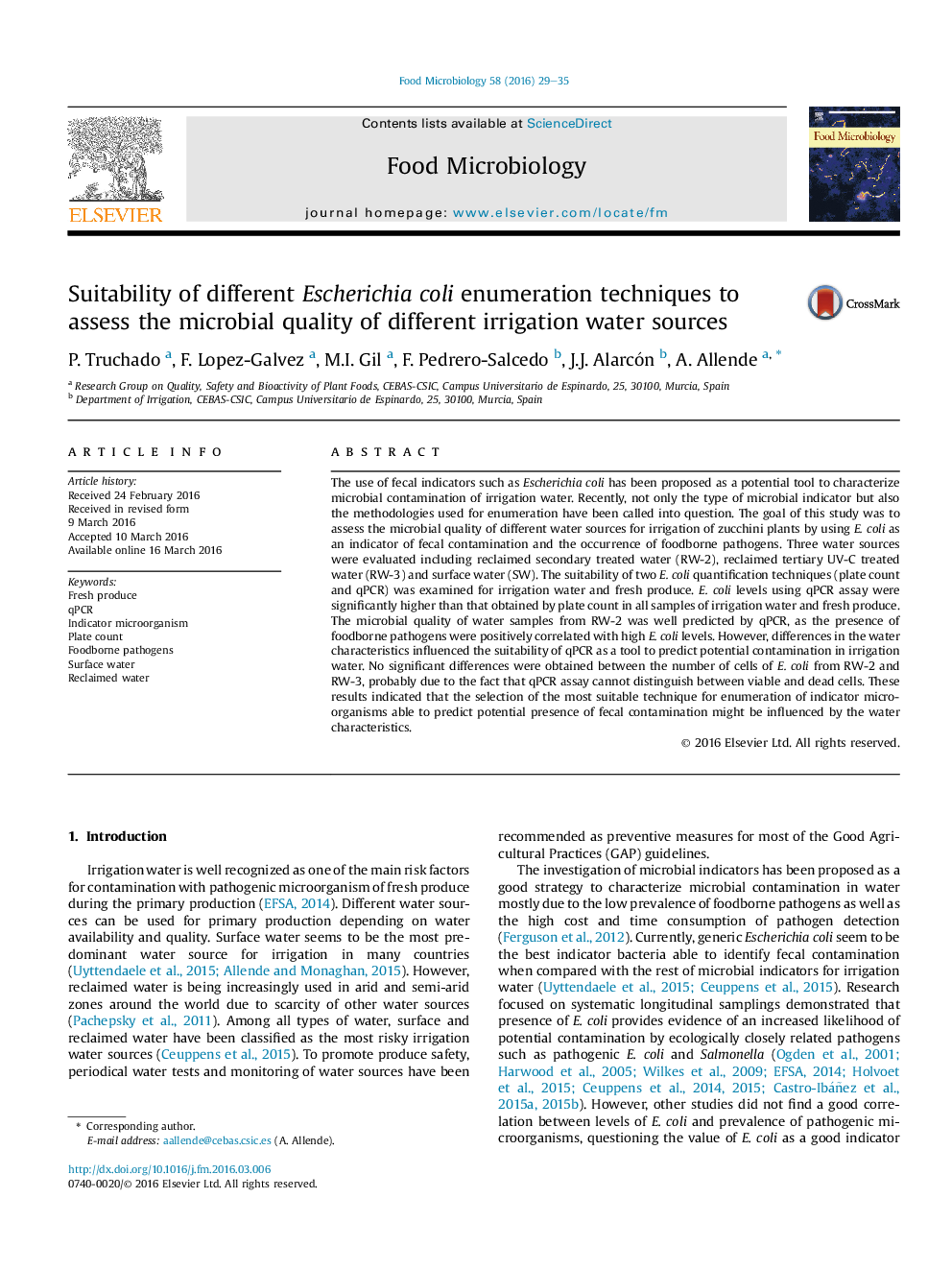| کد مقاله | کد نشریه | سال انتشار | مقاله انگلیسی | نسخه تمام متن |
|---|---|---|---|---|
| 4362573 | 1616243 | 2016 | 7 صفحه PDF | دانلود رایگان |
• Escherichia coli has been proposed as a tool to characterize fecal contamination of irrigation water.
• The suitability of two E. coli quantification techniques (plate count and qPCR) was examined.
• E. coli levels using qPCR assay were significantly higher than that obtained by plate count.
• The microbial risk of water samples was well predicted by both enumeration techniques.
• Differences in the water characteristics influenced the suitability of qPCR as a tool to predict potential contamination.
The use of fecal indicators such as Escherichia coli has been proposed as a potential tool to characterize microbial contamination of irrigation water. Recently, not only the type of microbial indicator but also the methodologies used for enumeration have been called into question. The goal of this study was to assess the microbial quality of different water sources for irrigation of zucchini plants by using E. coli as an indicator of fecal contamination and the occurrence of foodborne pathogens. Three water sources were evaluated including reclaimed secondary treated water (RW-2), reclaimed tertiary UV-C treated water (RW-3) and surface water (SW). The suitability of two E. coli quantification techniques (plate count and qPCR) was examined for irrigation water and fresh produce. E. coli levels using qPCR assay were significantly higher than that obtained by plate count in all samples of irrigation water and fresh produce. The microbial quality of water samples from RW-2 was well predicted by qPCR, as the presence of foodborne pathogens were positively correlated with high E. coli levels. However, differences in the water characteristics influenced the suitability of qPCR as a tool to predict potential contamination in irrigation water. No significant differences were obtained between the number of cells of E. coli from RW-2 and RW-3, probably due to the fact that qPCR assay cannot distinguish between viable and dead cells. These results indicated that the selection of the most suitable technique for enumeration of indicator microorganisms able to predict potential presence of fecal contamination might be influenced by the water characteristics.
Journal: Food Microbiology - Volume 58, September 2016, Pages 29–35
